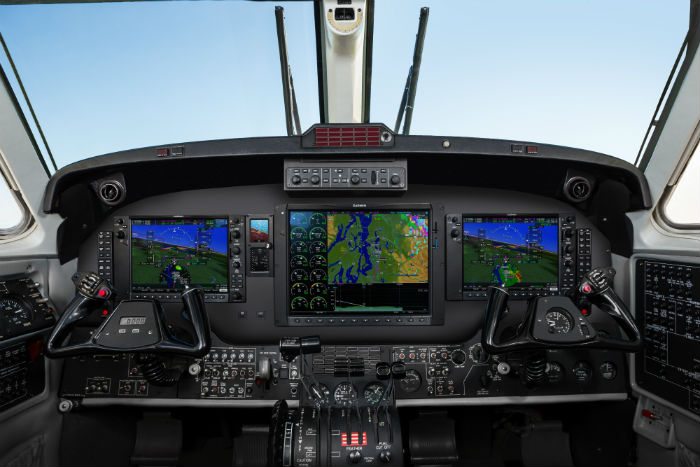Action Alert: 4 Reasons To Install “NextGen” Equipment In Business Aircraft Sooner Than Later

Garmin G1000 NXi cockpit
NextGen is a worrying thing for owners, David G. Meyer explains why fitting the new standard for air transportation equipment should be done as quickly as possible:
Starting January 1, 2020, most business aircraft will have to be equipped with Automatic Dependent Surveillance-Broadcast (“ADS-B”) Out equipment to fly in particular controlled airspace under the NextGen system. According to the Federal Aviation Administration (FAA), that is a hard compliance date; it will not change. Other countries have set their own deadlines for installations of the same or similar technology.
NextGen refers to the Next Generation Air Transportation System. The FAA has developed the system, generally, to expand the national airspace (NAS) to meet future demand and support the economic viability of the system, as well as lessen the environmental impact of business jets and enhance efficiency in the NAS.
ADS-B constitutes a core aspect of NextGen’s infrastructure. As a satellite-based technology (with ground support), ADS-B will replace radar as the primary means by which air traffic controllers track and manage aircraft. ADS-B is a foundational technology that modernizes the NAS from a ground radar system to satellite-based GPS technology. It will enable more efficient separation of aircraft by transmitting precise metrics in real time on such flight operations as turns, climbing and descending. ADS-B will also provide coverage where radar doesn’t exist, like over the Gulf of Mexico and in mountainous terrain.
A Traffic Collision Avoidance System (TCAS), which operates independently of ground-based aircraft traffic control (ATC), minimizes the risk of mid-air collisions between aircraft. However, TCAS is not a substitute for ADS-B Out. In fact, that latter provides a greater array of precision surveillance capabilities and protection for aircraft in flight.
Individuals impacted by the ADS-B Out requirements should begin developing a compliance plan now. Here are four reasons:
1. Repair facilities lack the capacity to do the required ADS-B Out work by January 1, 2020. Repair facilities have limited “slots” and skilled staff to do all of the work required to comply with the FAA rules before January 1, 2020. In various industry gatherings, the message has become clear: Arrange for the work now (i.e., make a reservation) as too many aircraft still need the ADS-B Out work for available repair facilities to accommodate them. A good way to accomplish the upgrade, and minimize the “out of service” time of an aircraft, is to schedule the work at the same time as another near-term scheduled maintenance visit.
2. The value proposition justifies completing the work sooner rather than later. You should be able to roughly calculate the savings and efficiency associated with installing ADS-B Out. For example, an ADS-B-equipped aircraft should have priority over non-equipped aircraft, including more flexible and continuous routing reducing flight time, fuel and delays associated with runway congestion or inefficiencies.
3. Failure to timely install ADS-B Out equipment may put downward pressure on residual values. Downward pressure on residual value already presents one of the most difficult economic problems in the ownership, financing and sale of business aircraft. Valuation experts warn that the failure to incorporate ADS-B Out technology sooner than later will likely put even greater downward pressure on residual values of the aircraft as compared to aircraft with the technology on board. Operators should carefully examine the quality, durability and operational capabilities of available systems–beyond the basic regulatory compliance level – as the choices may support residual value of the aircraft.
4. No ADS-B Out by January 1, 2020, No Flight Operations. The FAA has made clear that business aircraft will not be entitled to access the NAS covered by the ADS-B rules if they do not have the equipment installed and working properly before January 1, 2020. The airspace includes Classes A, B and C airspace and certain Class E airspace. As jet aircraft routinely travel internationally, operators should plan now to compliance deadlines and compliance timing.
It is clear that ADS-B Out installation cut-off date is rapidly approaching. Early adopters will likely to fair better than the later ones, potentially leaving the worst procrastinators grounded after Jan 1, 2020 for weeks if not longer.
Written by David G. Meyer, partner at Shackelford, Bowen, McKinley & Norton, LLP.
Subscribe to our free newsletter
For more opinions from Corporate Jet Investor, subscribe to our One Minute Week newsletter.








